If you’re looking for some of the best watercolor flower painting ideas for beginners, you’ve come to the right place. Watercolor painting is a great creative outlet.
If you’re new to watercolor, here are a few of my favorite watercolor paintings for beginners to inspire you.
Worksheets I Use to Practice Watercolor: Watercolor Success in 4 Steps: This book features 150 easy watercolor painting projects, including flowers, fruits and veggies, animals, and more.
Purple Flowers
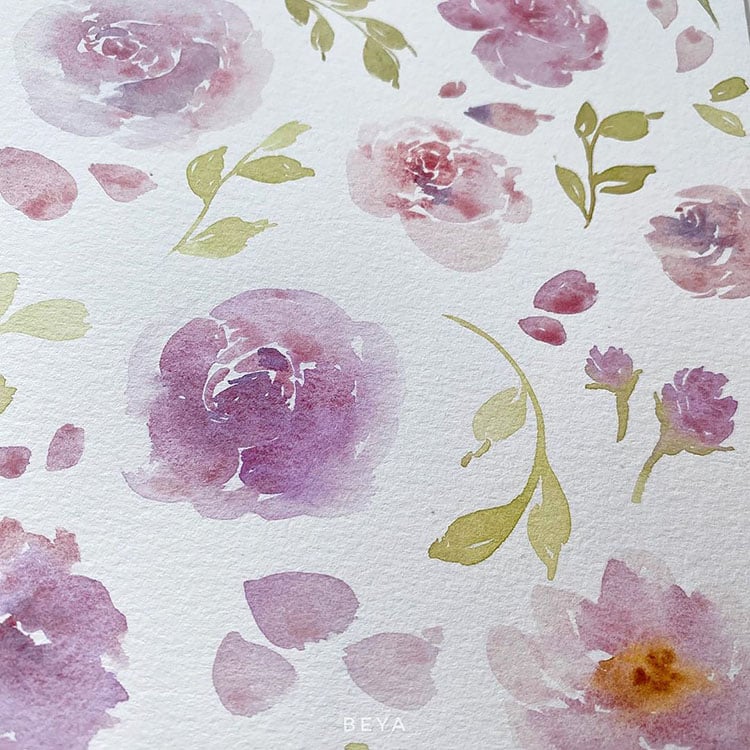
I love the simplicity of this floral watercolor project. I also love the soft colors that were used here.
Single Watercolor Rose

If you’ve ever looked at a single rose and thought “nature really outdid itself with this one,” I can totally relate to you. Roses are beautiful as a bunch, but there is something about seeing the individual flower that’s so special.
Blue Watercolor Flower
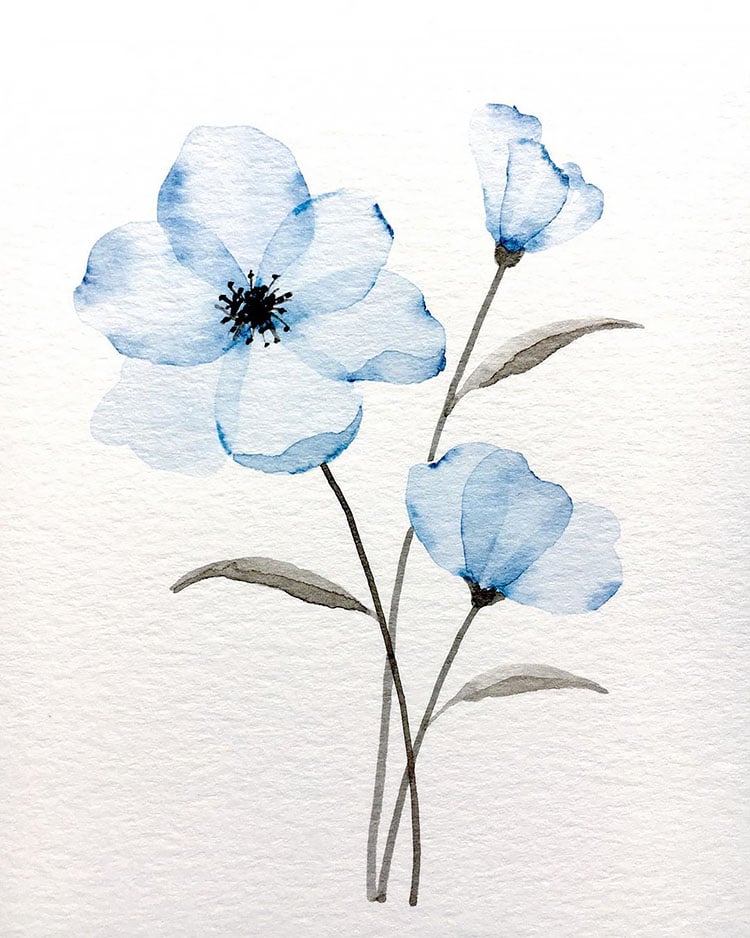
The simplicity of this blue floral painting is perfect for anyone looking for a quick and easy watercolor project.
Wildflowers Painting
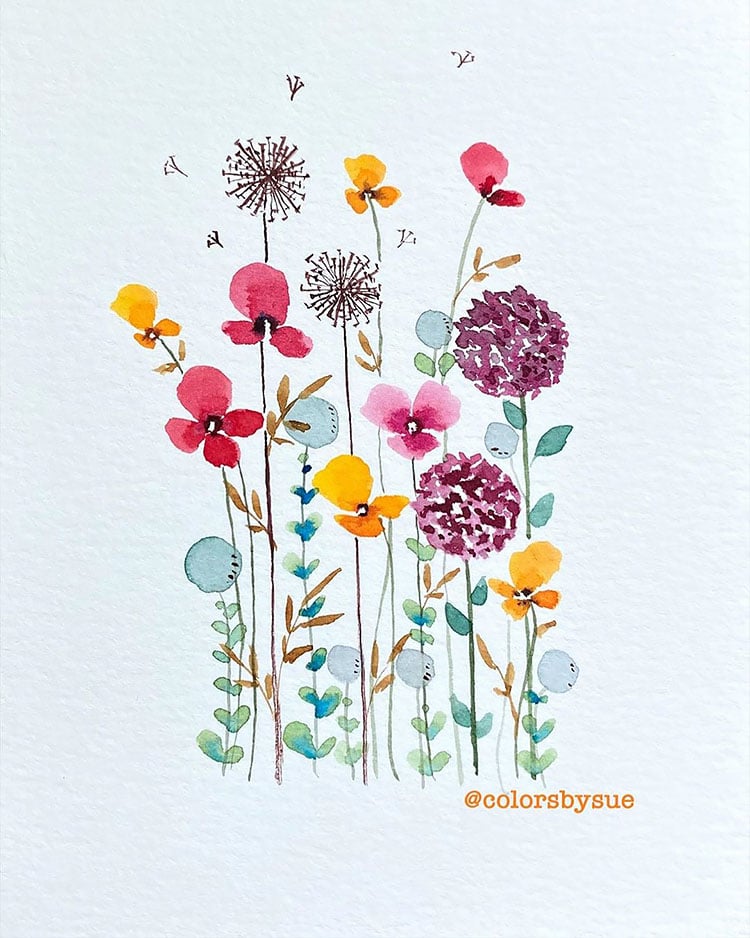
This design featuring beautiful wildflowers would look perfect on a handmade greeting card for a friend or family member.
Pink and Blue Flowers
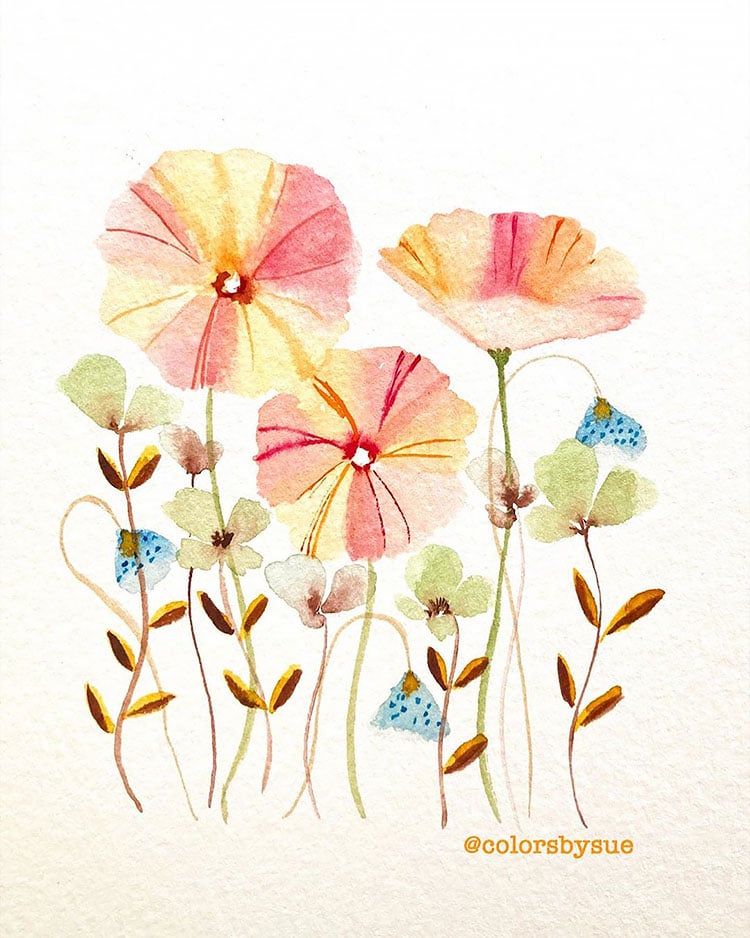
I love the simplicity of this watercolor flower painting filled with pink and blue flowers. What a unique color combination that is used here.
How to Draw a Plant

This step-by-step tutorial shows you how simple it is to paint a beautiful plant and pot.
How to Paint a Flower
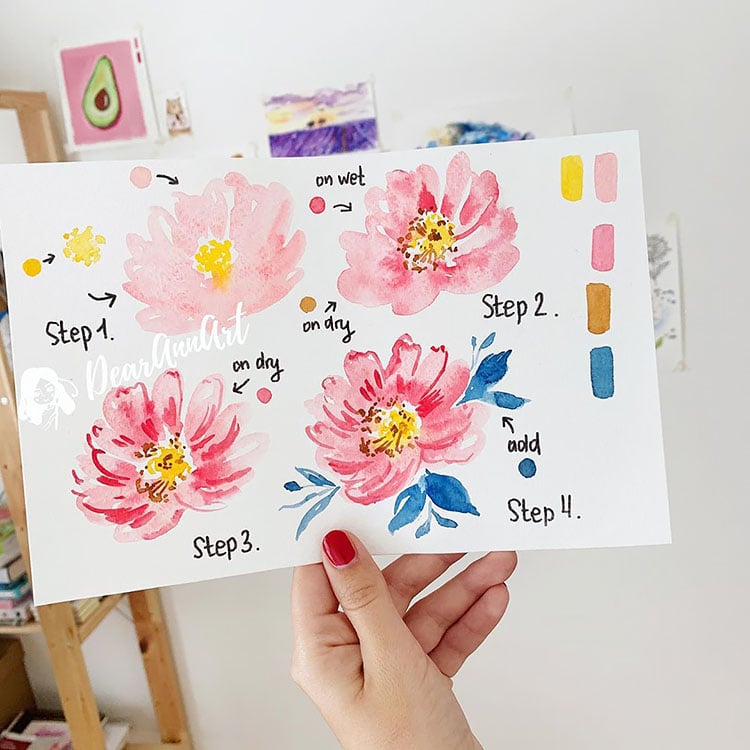
Here’s another gorgeous step-by-step watercolor tutorial. This one shows you how to paint a beautiful flower.
Purple and Blue Flowers
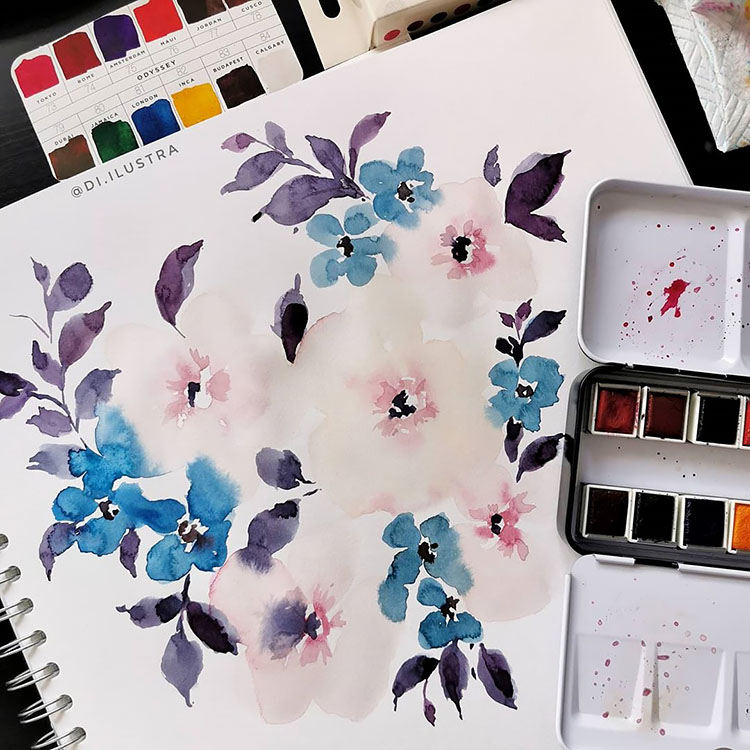
If you love the look of these watercolor flowers. The watercolor art style looks wonderful. I also love the color combination of purple and blue.
How to Paint a Cactus

If you’re looking for a quick and fun watercolor project, you can paint this cactus in a pink pot. Don’t forget to add the flower on top.
Pink and Red Flowers
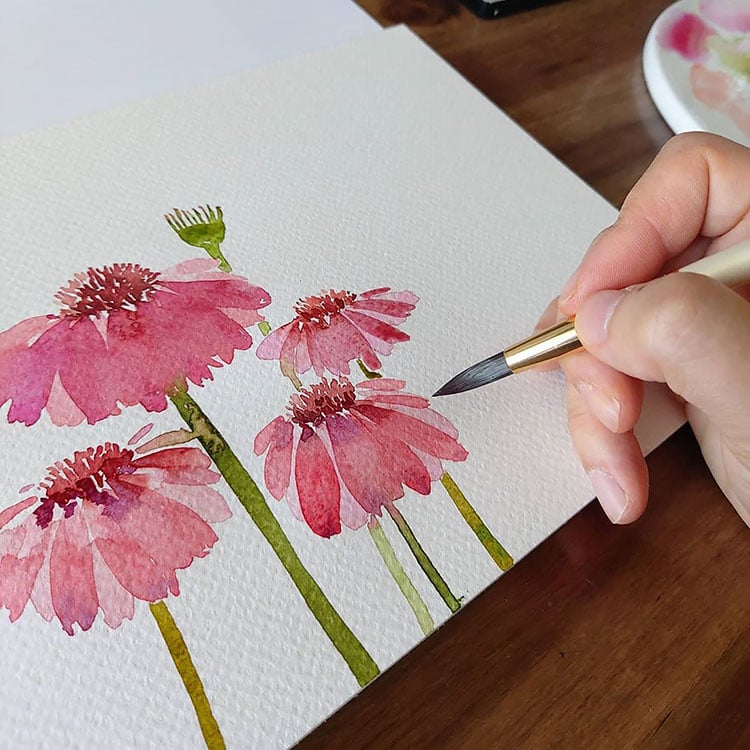
This painting is a great reference for drawing flowers. Especially if you want to practice with just one type of flower.
Carnation Flower Painting

I love the simplicity of this carnation watercolor painting. As you can see, the artist is using real flowers as a reference.
Pink and Orange Watercolor Flowers
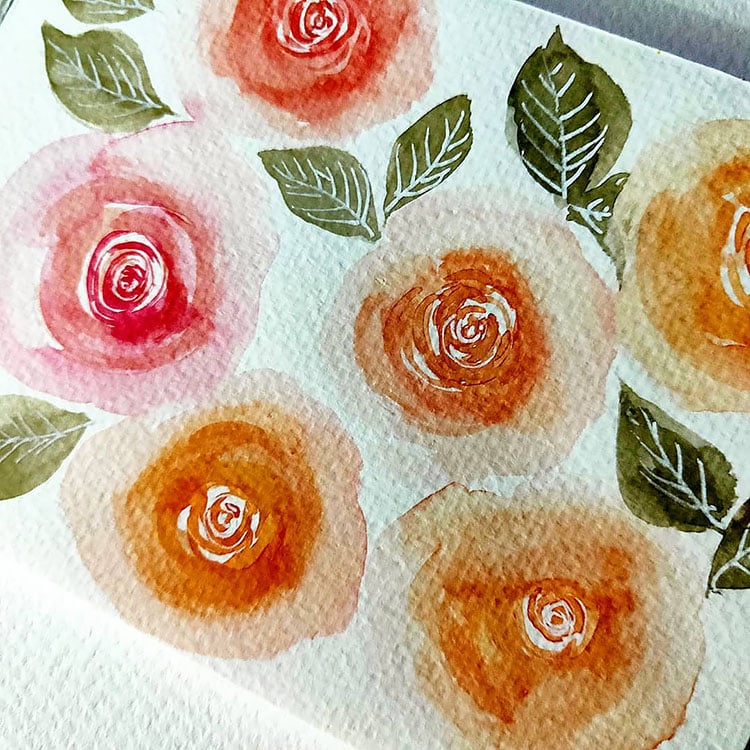
Inviting shades of pink and orange watercolor flowers provide a refreshingly vibrant look to any project. Whether it be an event, home decor, or an art piece – these blossoming hues are sure to make your creation bloom.
Shades of Blue Watercolor Flowers
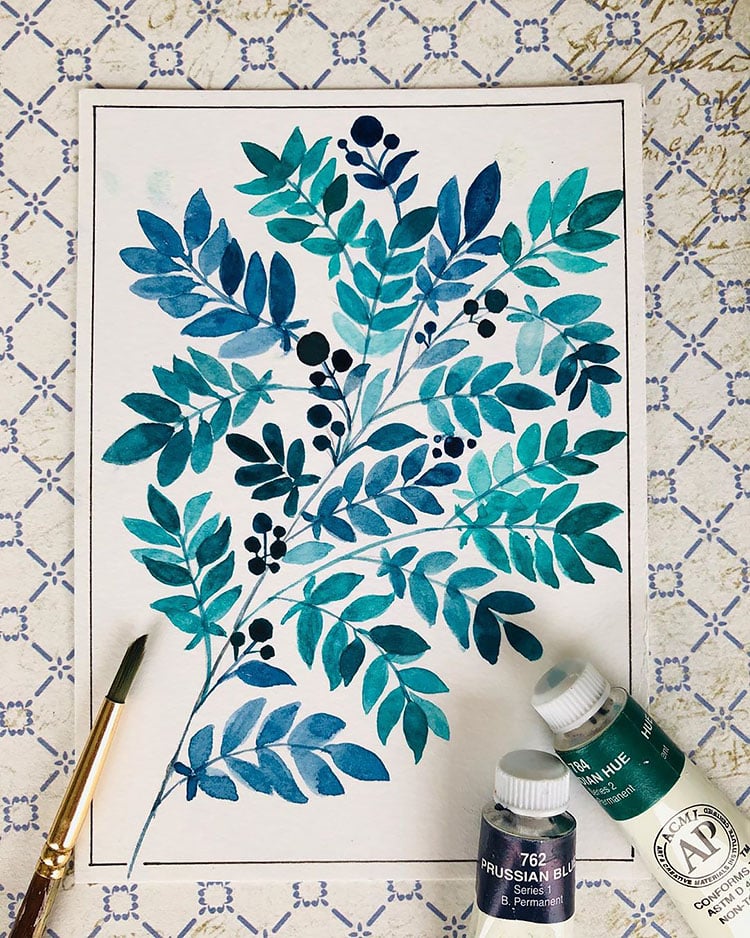
After completing a piece like this, it would look great inside of a frame and hanging on your wall.
Muted Colors
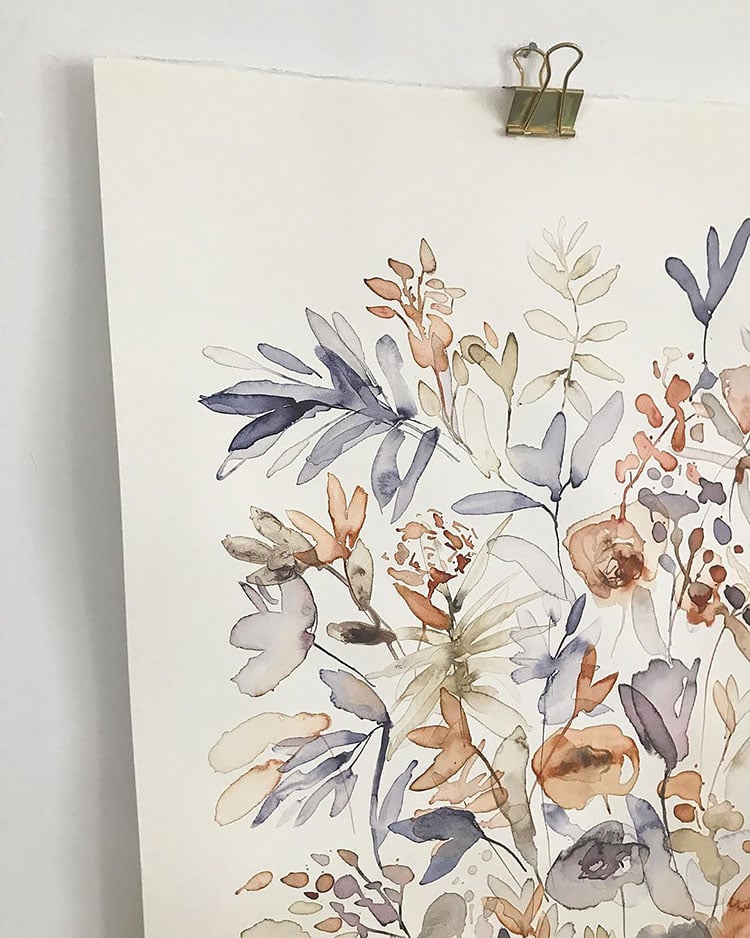
My favorite thing about this painting has to be the colors. The browns, blues, and greens go so well together.
Watercolor Poppy Flowers

The poppy flower is so easy to paint, and the finished design looks beautiful. This is a very beginner-friendly painting.
Colorful Flowers
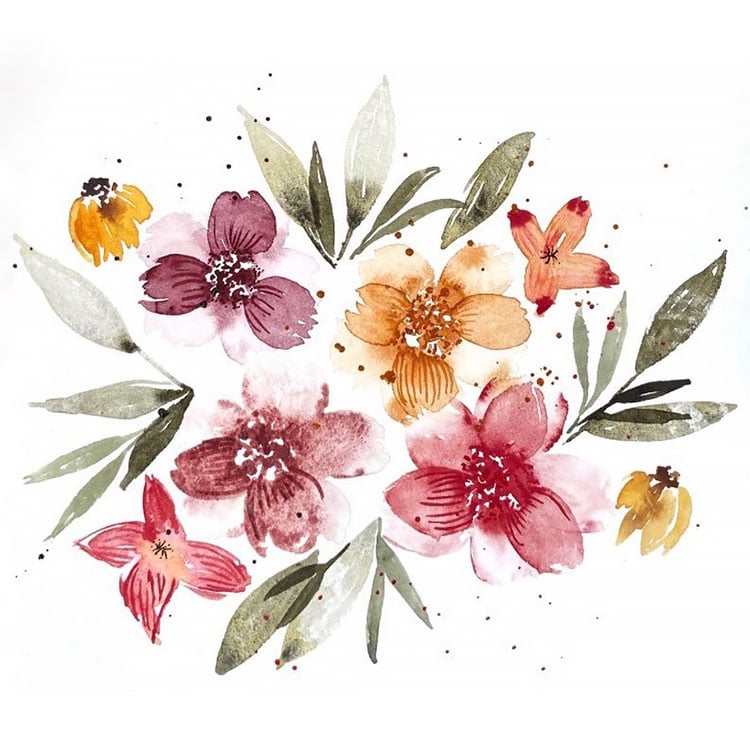
What a gorgeous piece of artwork. The flowers are beautiful, and the chosen colors go so well together.
Flowers in a Pot

The flower pot adds such a nice touch to this painting. I love the detail used with the flower pot and the choice of flowers.
Watering Can with Purple Flowers
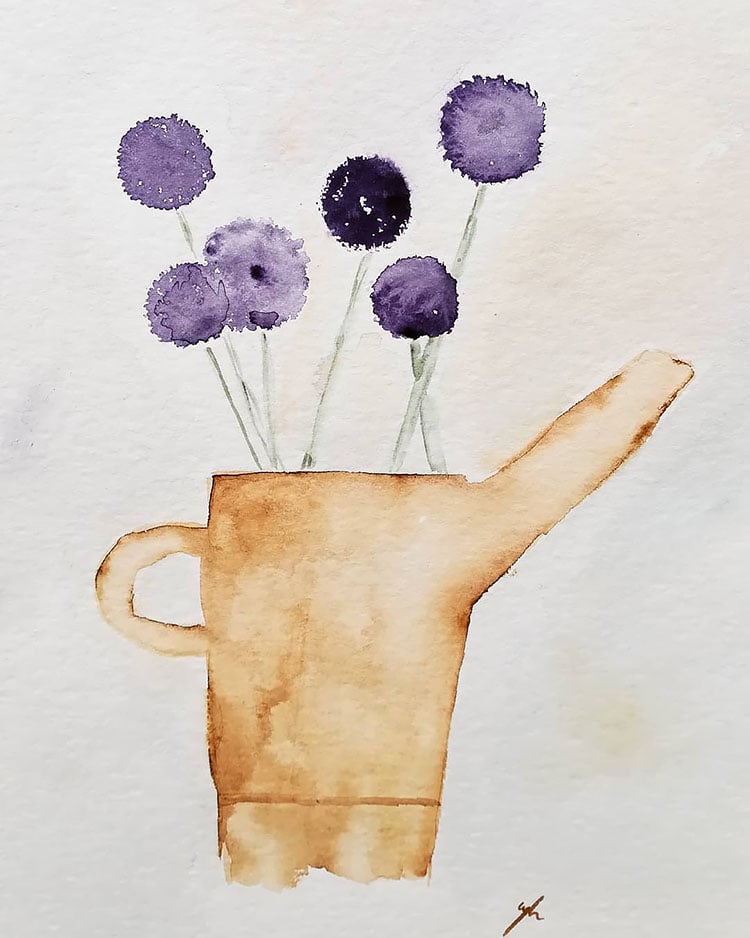
This painting of flowers in a watering pot would make a great addition to your home decor.
Shades of Green Flowers

I love the simplicity of these flowers. I also really like the simple green and yellow color palette.
Vibrant Colored Flowers
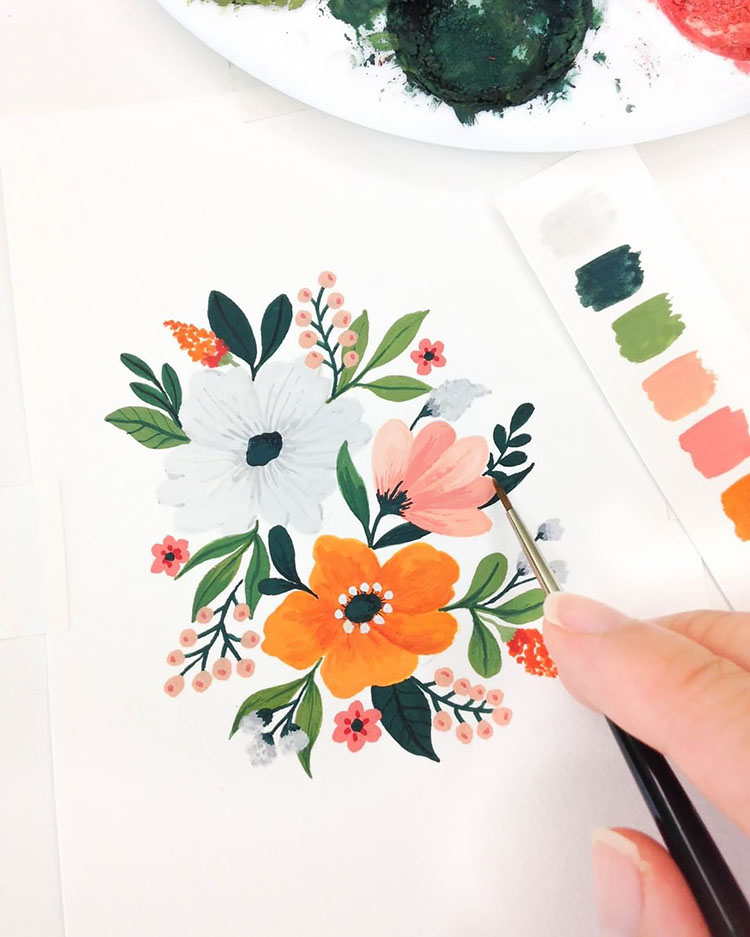
If you’re looking to use bright colors like oranges, pinks, and greens, this reference shows you how the colors look together.
Vintage Floral Painting

Use this watercolor painting as a reference to create a beautiful piece of art that you can hang on your wall.
Elegant Flowers
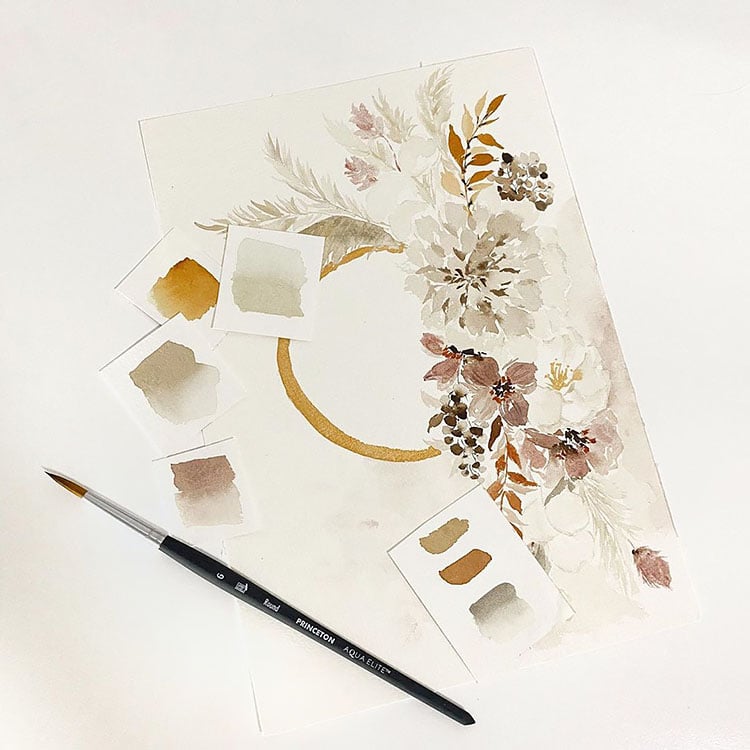
I tend to use bright colors in my paintings, but I’m always impressed by watercolor paintings that used more muted colors.
Marigold Bouquet
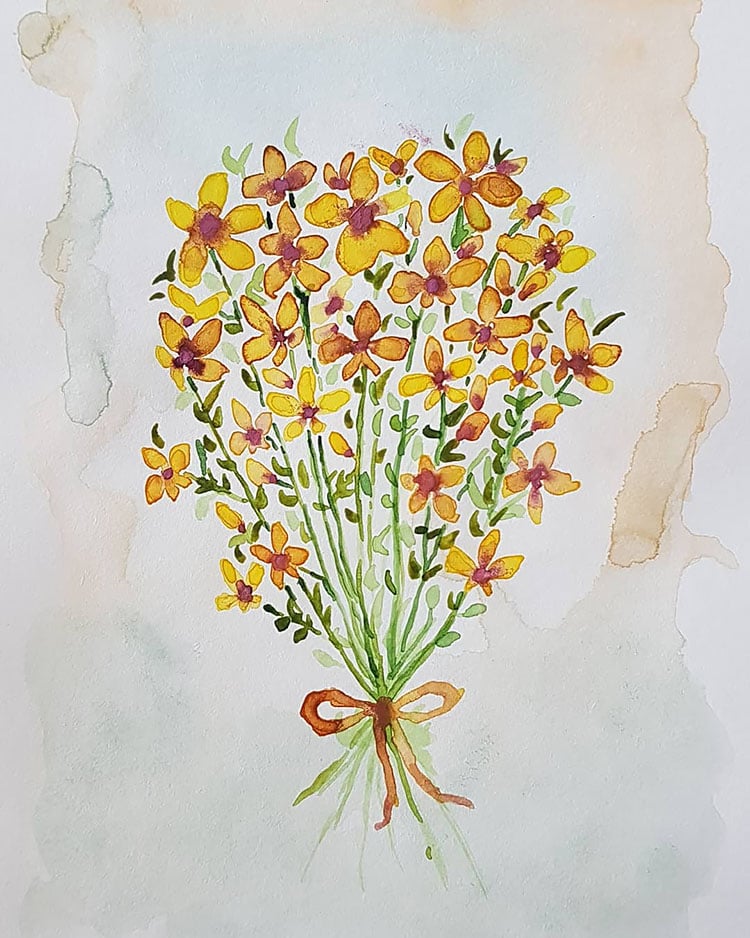
I don’t often paint floral bouquets, but this piece of art is just stunning and something I would love to recreate.
Lavender Flowers
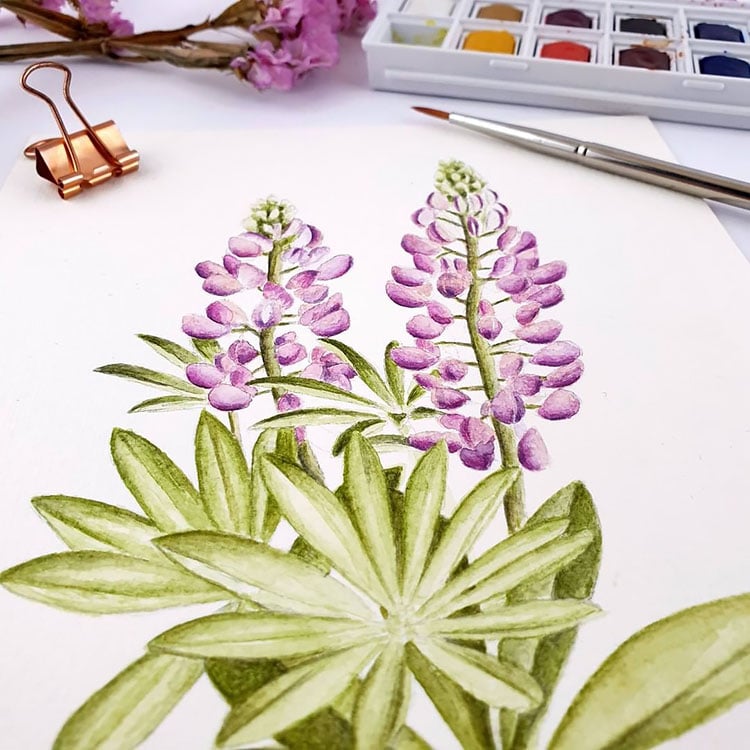
This flower painting of lavender flowers is so simple and is the perfect reference to use when you want to relax while painting.
Flowers with Soft Pastels
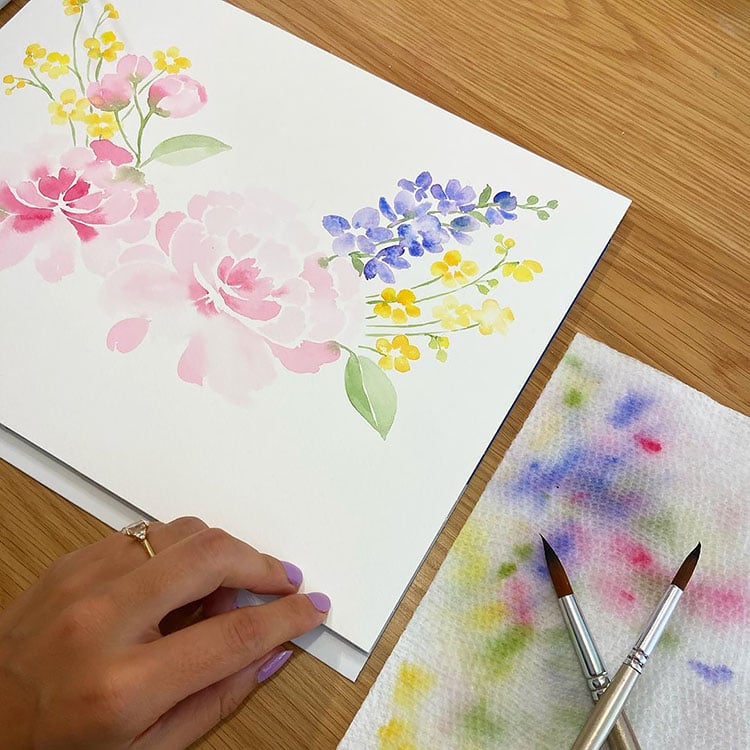
The soft pastel colors used in this painting look great. This is a great beginner’s floral watercolor reference.
Bees and Beetles Painting

If you want to try something fun, consider painting these cute and colorful watercolor doodles.
Large Roses
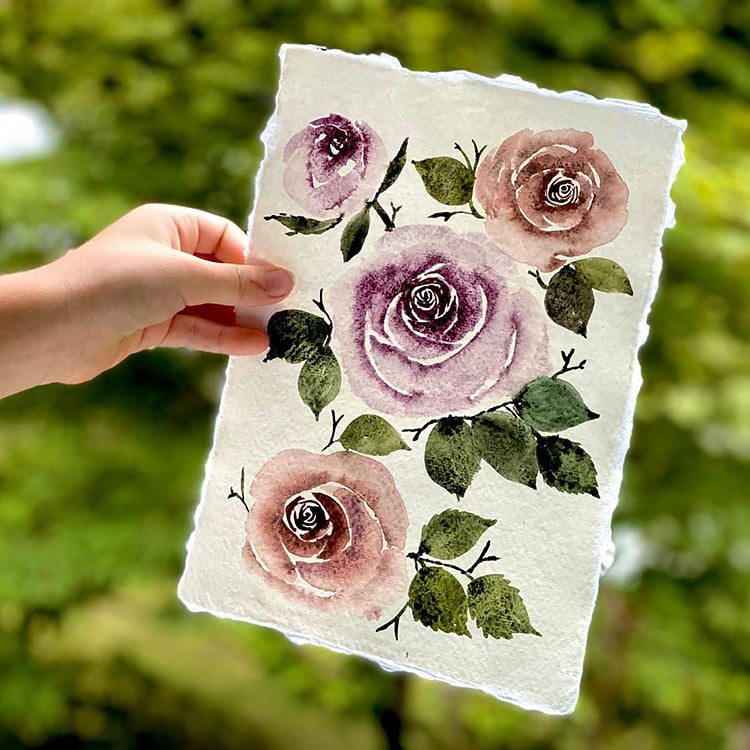
I think this floral painting is just stunning. I also love the paper that it was drawn on. It gives the art a beautiful vintage feel.
Floral Doodles

Your paintings don’t always have to be one single work of art. Have fun creating a variety of flower doodles.
Cactus in Flower Pot
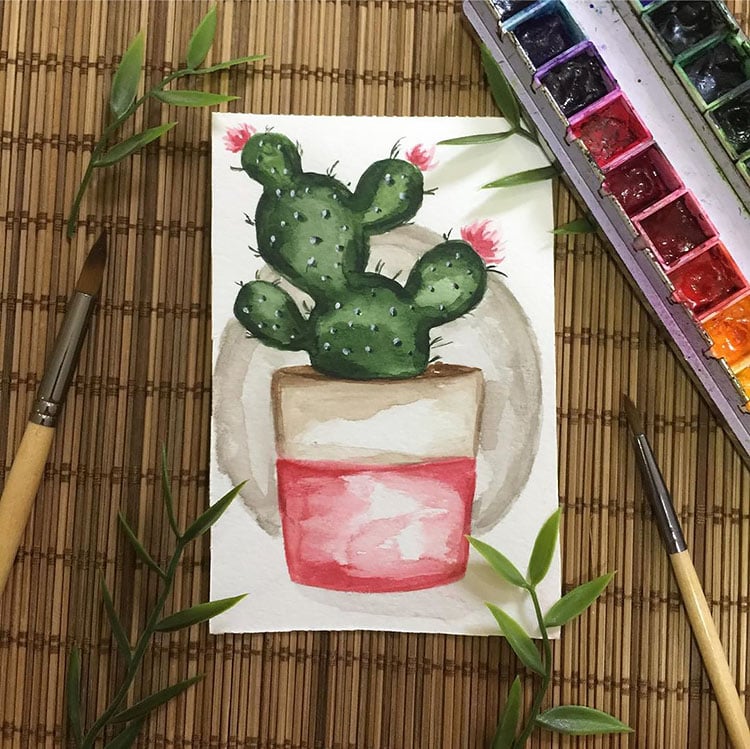
If you’re new to watercolor, I have always found the cactus to be a beginner-friendly plant. Place your cactus in a pot to add detail to your painting.
Poppy Field and Blue Skies
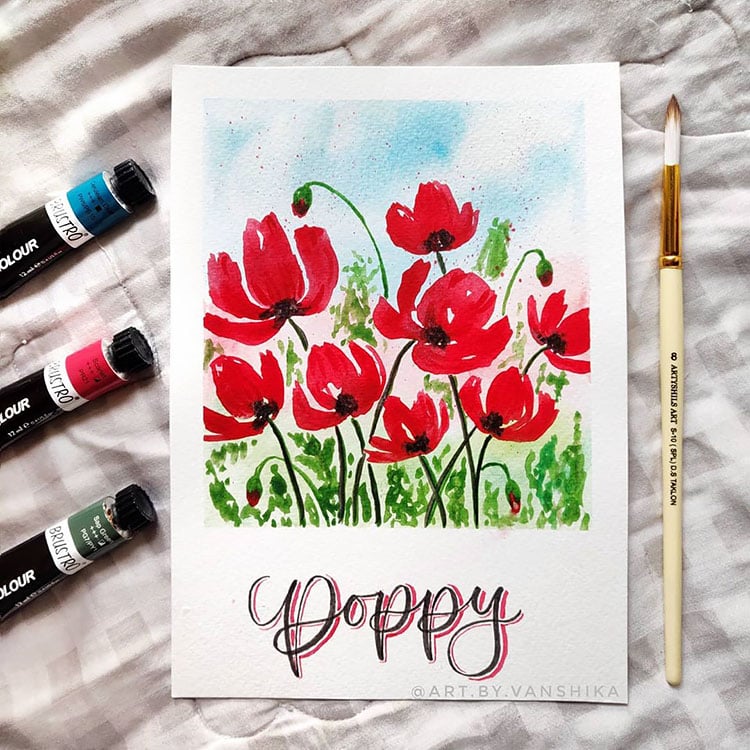
Here’s another watercolor painting that would look great as a handmade greeting card. Use your favorite flower for your design.
Watercolor Leaves

If you would like to practice creating watercolor leaves, you can use this picture for reference.
Six Flowers

Trying your hands at these watercolor flower doodles is a great way to practice your painting skills.
White Orchid Painting

A white orchid can be painted in a variety of ways. For an elegant and simple look, try using a few colors and just the right amount of detail to create a stunning flower.
Sakura’s in a Heart

If you love the Sakura flower, I think you’ll enjoy this reference that features this beautiful flower within a heart-shaped painting.
Abstract Watercolor Flower

Abstract-style paintings can be really fun because they easily allow you to put your personality into your art. Use this painting for reference, but let your imagination be your guide to make it your own.
Tall Roses
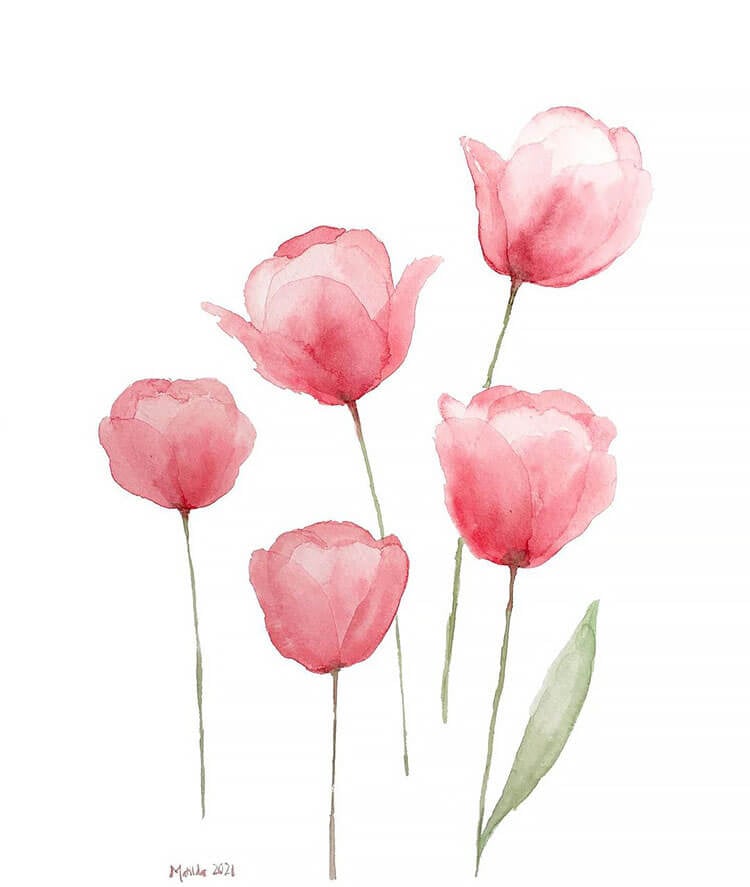
I love roses because not only are they beautiful, but once you get the hang of them, they’re really simple to draw and paint.
Long Lavender Branch

This simple watercolor painting features a long lavender branch. If you’re looking for a simple painting, this is a great reference for you to consider.
Elegant Flowers
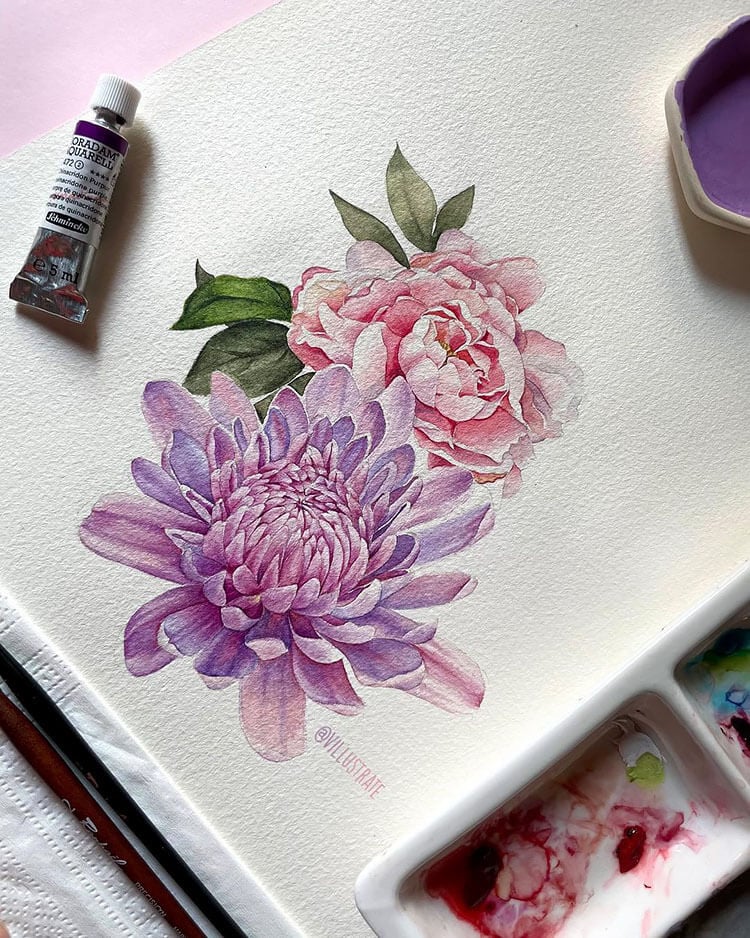
I find these flowers to be so beautiful and elegant. If you want a bit of a challenge, this painting makes a great reference.
Flower Sketch (In Progress)

If you like to see art in progress, here’s a painting that shows us the process of painting a beautiful flower.
Pink Watercolor Flower

Elevate your art skills by recreating this beautiful pink watercolor flower. The simplicity of this design makes it the perfect starting point for anyone new to watercolor.
Soft Watercolors
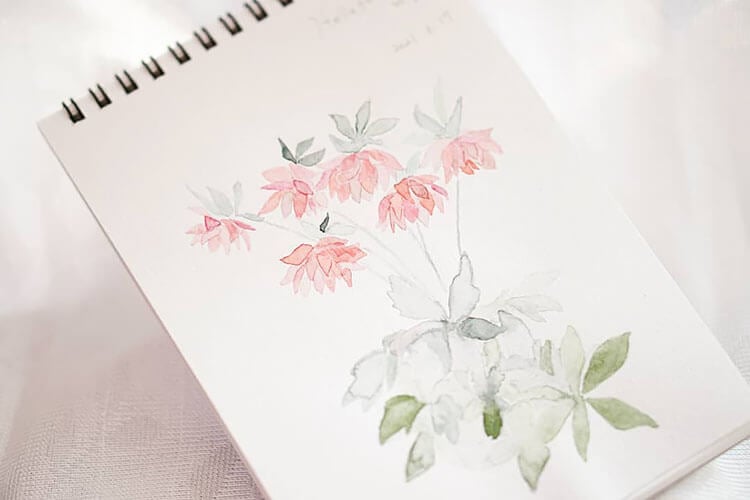
This painting uses light watercolor paint to create a beautiful piece of art. I recommend checking out the artist if you enjoy this art style.
Two Paintings Same Flower

Painting the same flower using two different colors is such a cool idea. Both of these paintings would make a great gift to hang side by side.
Colorful Flowers

These flowers are so bright and colorful. I can imagine how fun it would be to paint such a vibrant piece of art.
Pink and Blue Flowers
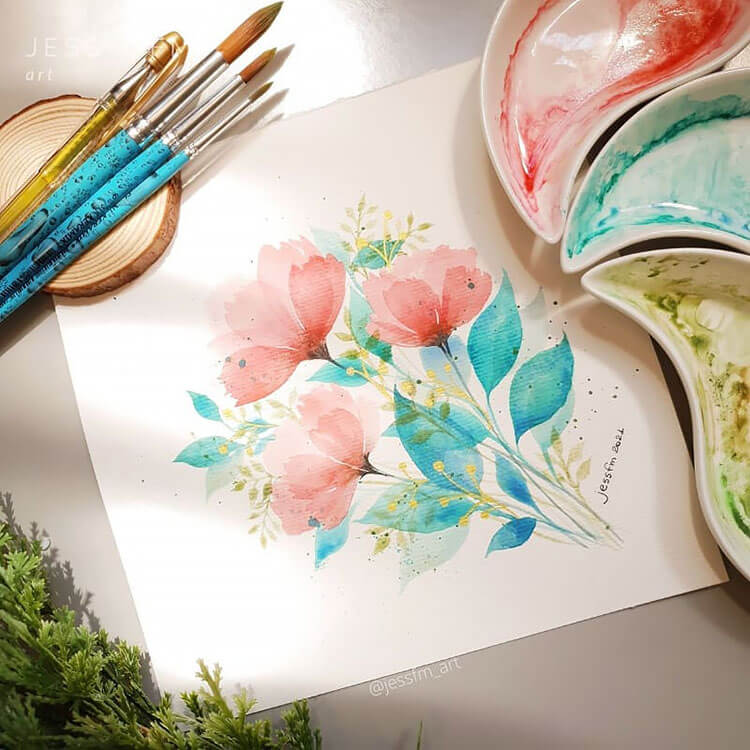
Here’s another watercolor painting that has a unique art style. I love the pink, blue, and green color combination. The colors go so great together.
A Bunch of Lavender

Many people enjoy the lavender flower. If you do as well, I think you’ll enjoy this painting which features a bunch of beautiful lavender flowers.
Bee and Flowers
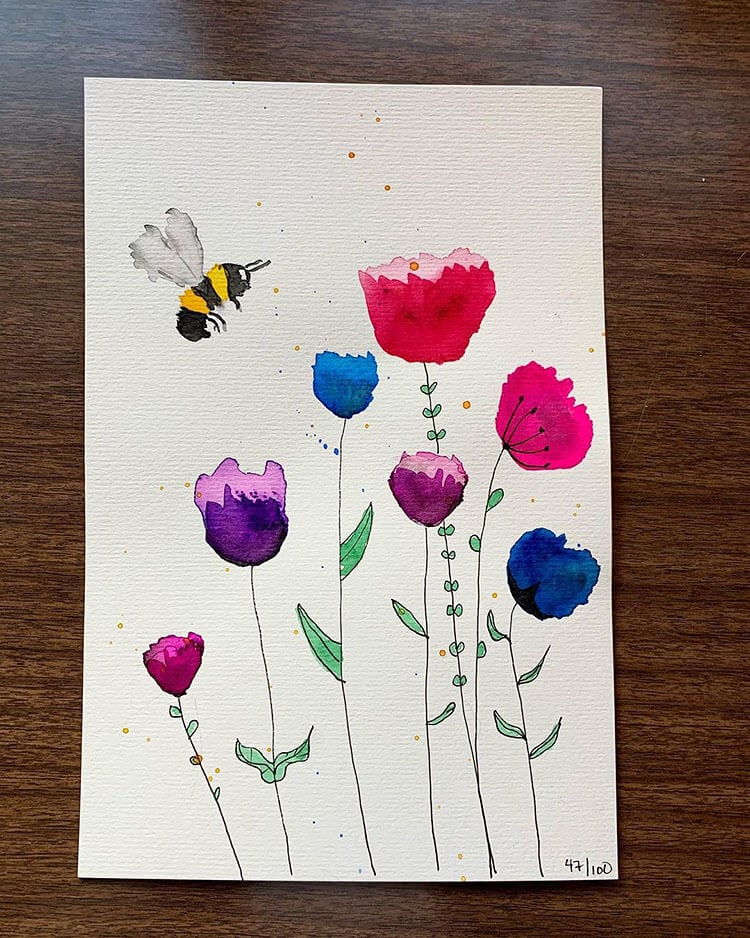
Add fun elements to your painting, such as a bumble bee. You could also include a hummingbird because they just love drinking the nectar from flowers.
Simple Red Flower

Here’s another simple flower painting that’s great for beginners or anyone looking for a fun and easy painting project.
Orange and Blue Flowers
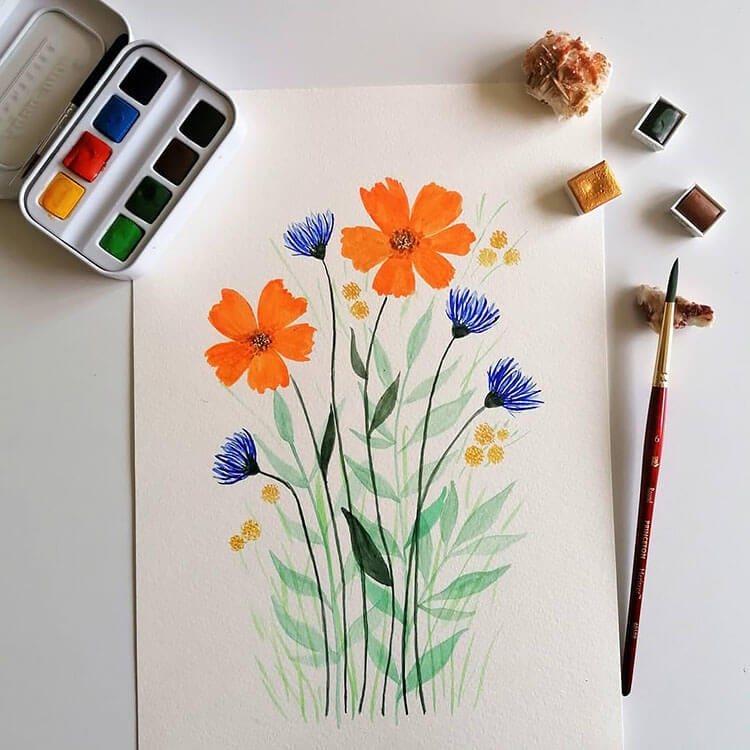
Here’s a color palette you don’t see often, which makes me appreciate this painting even more. Step outside of the box when choosing colors for your floral painting.
Purple Tulips

Tulip lovers will appreciate this beautiful purple tulip painting. Fun fact, did you know that there are over 150 species of tulips with over 3,000 different varieties?
Vibrant Colors

If you love working with vibrant colors, let this floral piece inspire you. I challenge you to come up with your own vibrant color palette for your painting.
Simple Purple Flower

If you want a quick painting project, consider something like this simple purple flower. I love pieces like this when I feel like doing a laid-back project.
Colorful Flowers

This watercolor painting is by the talented @matilda.magdalena on Instagram. Matilda creates beautiful floral watercolor paintings, prints, and more.
Red Watercolor Flowers

These red watercolor flowers are simply stunning. With the delicate use of water and brush strokes, these flowers seem to come to life on the paper.
Simple Yet Beautiful

The flower painting below is great because it’s simple yet beautiful. If you’re a beginner artist, you don’t have to paint something complicated in order to have wonderful art.
Easy Red Flower
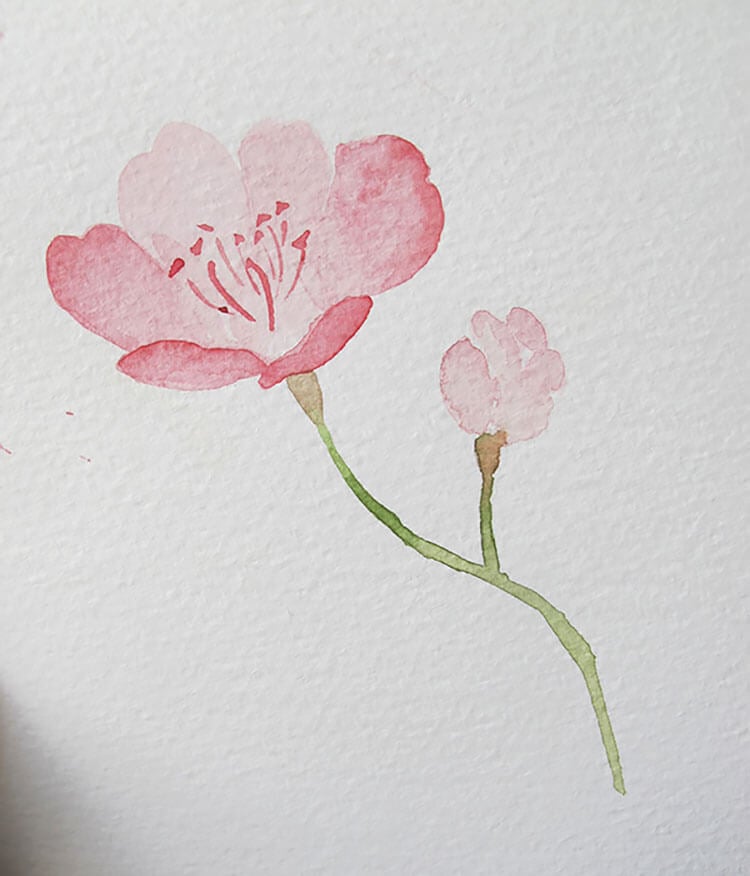
This easy red flower is perfect for those who are new to watercolor painting. You’ll be so proud of yourself after you’ve completed this piece.
Simple Blue Flowers

I love the simplicity of these blue flowers. You can paint your flowers the same colors but paint them from different angles and perspectives. This is a great way to perfect a flower design.
Flower Collection

This cute collection of paintings features different flowers for you to paint. Add your own unique style to your art, and enjoy creating a set of beautiful flowers.
Two Floral Paintings

What a stunning photo featuring two beautiful floral watercolor paintings. I love the choice of colors used in these paintings.
Flowers in Tea Cups

This painting of flowers inside tea cups is so beautiful and creative. Be sure to check out the artist to see more watercolor paintings.
Red Watercolor Flowers

I love the detail involved in the creation of these flowers. What a lovely piece of art.
Elegant Watercolor Art Style

I love the art style used to create this painting. It’s clear that this artist is super talented.
Bold Watercolor Flowers

I’m loving the colors used for this painting. The colors are so bold and make this piece of art really stand out.
Realistic Flowers

These flowers look so real and almost like they’re popping off of the page. What a great painting.
Soft Pastels

I love the soft colors used for these watercolor flowers. These paintings are so soft and feminine.
Frame Your Work
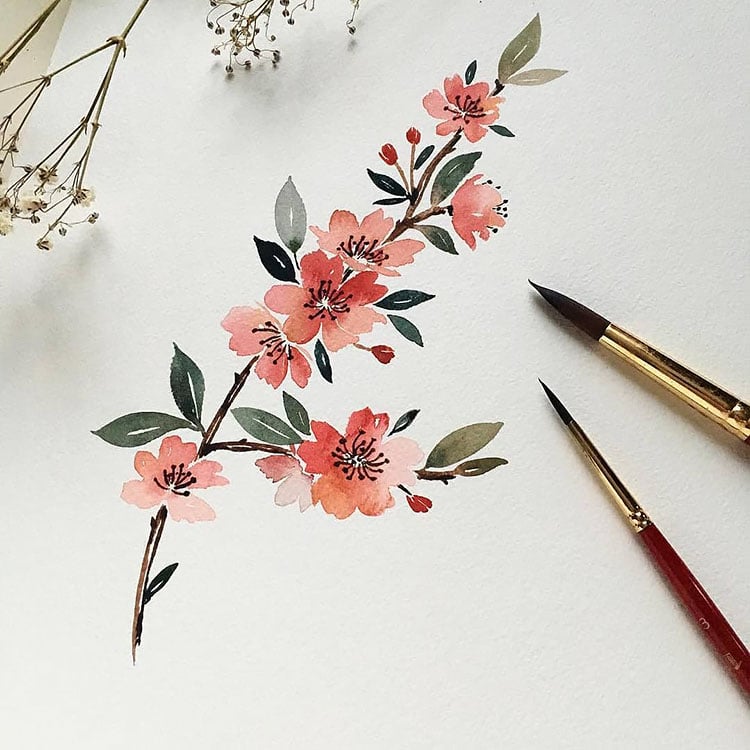
This painting would look awesome in a frame. It would also make a great handmade greeting card.
Simple Watercolor Flower

If you’re looking for a simple floral watercolor reference, this is a great photo to use for inspiration.
Mix Paint for the Perfect Color

I love how realistic this painting looks. The artist chose great colors for this floral watercolor painting.
Calla Lily Flower

This watercolor painting showcases the beautiful calla lily flower. If you’re not familiar with this flower, make sure you check out some real flower references.
Real Flower Reference

I love the simplicity of this watercolor painting. As you can see, the artist is using real flowers as a reference.
Watercolor Flowers in Vase

If you enjoy watercolor painting, you’ll be inspired by this beautiful painting of flowers in a round vase. Get creative by painting all of your favorite flowers.
Vibrant Flowers

This artist has used watercolor paint to create vibrant and beautiful flowers. This painting is perfect for helping you perfect your watercolor shading techniques.
Flower Using Muted Colors

I love how these flowers have been painted with muted colors. The muted tones create a calming effect and are great for botanical paintings.
Pink and Purple

If you’re looking for some pink and purple inspiration, you can use these gorgeous paintings for reference.
Dark Colors

I love the dark colors used to create this floral painting. I also really like how the paints blend into each other.
Hang on a Wall

After creating something like this, it would look wonderful framed and hanging on your wall.
Daisies on the Beach

If you’re looking for a landscape-style painting, this piece of art that features a field of daisies on the beach is the perfect reference and inspiration for your next painting.
Pink and Orange Roses

These pink and orange roses have been painted so beautifully. A painting such as this can be done with your favorite painting medium, whether it’s acrylic, watercolor, oil, gouache, or ink.
More Posts You May Like:
